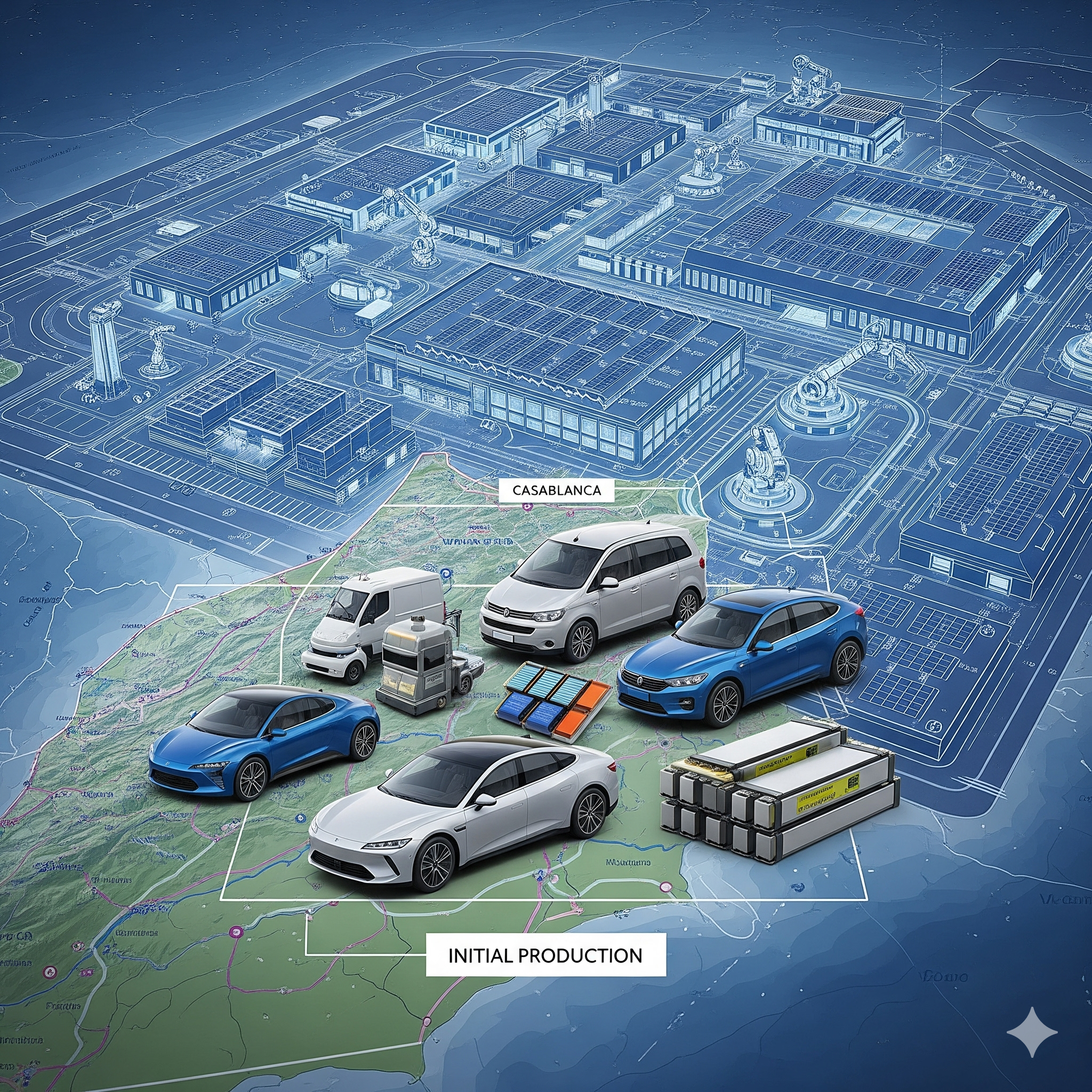How to Trade Morocco’s EV Push: STLA, 002074, and the ROO Math
Treat Morocco’s new EV headline as an ecosystem signal, not a backlog. Only 500 EUVs are firm; the 20,000-unit plan needs buyer, site and timeline. Near-term winners are scale and battery names—STLA and 002074—while rules-of-origin and IRA limits temper any quick EU export or U.S. subsidy upside now

Morocco’s latest EV headline should be read as an ecosystem signal, not a bookable backlog. The only hard commitment in hand is an initial shipment of 500 electric utility vehicles into the country paired with a framework to explore CKD local assembly; the widely quoted 20,000-unit figure is best treated as program aspiration until the Moroccan side names the buyer, publishes a plant site, discloses incentives, and dates a ramp. On scale, that matters. Morocco’s EV output sits around 40,000 units a year today, with policymakers touting roughly 100,000–107,000 by end-2025. On that base, 500 units won’t move national prints. Even a fully executed 20,000-unit fleet program over three to five years would register in volumes and supplier order books but still trail expansions already in motion.
The comparative anchor is Stellantis. Kenitra’s expansion points toward roughly 535,000 vehicles of annual capacity, while micro-EV output (Ami/Topolino/Rocks-e) is stepping up toward about 70,000 units per year. That positions Stellantis (NYSE: STLA) as the price-setter at the low-end electric segment across North Africa; any China-origin EUV entrant must meet or undercut that cost curve to win fleets without eroding margin. Morocco’s combined light-vehicle capacity across Stellantis and Renault is often pegged near 700,000, and automotive exports reached about MAD 157 billion (≈USD 17 billion) in 2024. Against those numbers, even a full 20,000-unit EUV program contributes more to supplier utilization and learning-curve effects than to headline export value unless average selling prices surprise to the upside.
Where the announcement is immediately investable is in supply-chain economics. Battery anchors are committed and scaling: Gotion High-Tech (SHE: 002074) has a roughly USD 1.3 billion gigafactory in Kenitra, starting around 20 GWh with scope to 40 GWh, while BTR New Material’s cathode project targets on the order of 50,000 tpa by the middle of the decade. Each additional EUV or passenger-EV program raises utilization odds for cells, cathodes, packs, and harnesses produced in-country, compressing logistics, reducing bill-of-materials volatility, and improving local-content math for Morocco-assembled platforms. That depth also lifts second-order beneficiaries such as Renault Group (EPA: RNO; OTC: RNLSY) through stronger supplier competitiveness even if direct overlap with utility EVs is limited.
Two policy realities should anchor base-case modeling. First, a Morocco CKD footprint does not automatically arbitrage Europe’s China EV trade measures. The EU’s anti-subsidy duties on China-built BEVs stack on top of the 10% base tariff and have run in the high-30s to mid-40s percent; preferential access from Morocco will depend on rules-of-origin and local-content across batteries, e-axles, and electronics, not just final assembly. Until a verifiable bill of materials shows sufficient non-Chinese content, assume limited to no tariff relief for EU exports. Second, Morocco’s U.S. FTA does not override Inflation Reduction Act Section 30D constraints: “foreign entity of concern” rules keep vehicles with Chinese-controlled battery components or critical minerals from qualifying for U.S. tax credits in 2024–2025, capping any near-term U.S. subsidy angle even if final assembly occurs in Morocco.
Positioning follows. Treat the announcement as a credible entry marker into Morocco’s EV cluster with near-term value in ecosystem confirmation rather than immediate unit economics. The cleaner expressions remain capacity and supply-chain names already executing in Morocco—Stellantis for scale and supplier leverage, Gotion for early offtake optionality—while you watch for Moroccan-side confirmations that convert a press trajectory into capital-cycle reality. If you want a logistics angle, incremental box and CKD-kit flows would be supportive rather than thesis-changing for Med-EU shippers. Until the counterparty is named, the CKD site is disclosed, incentives under the Investment Charter are published, and a dated ramp appears, anchor forecasts to the documented 500-unit tranche and benchmark impact against Morocco’s 100k-plus 2025 EV-production target and Kenitra’s 535k capacity and ~70k micro-EV run-rate.





